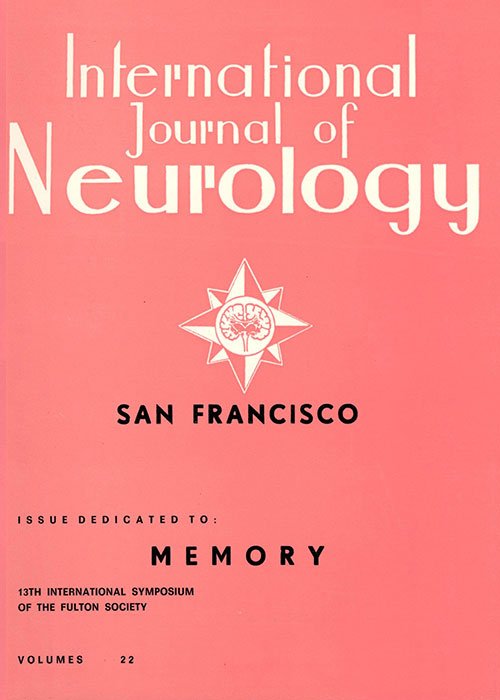Full Issue
DOI:
https://doi.org/10.62486/ijn198842Abstract
The combined issue (Numbers 1–2–3–4) of Volume 22 of the International Journal of Neurology (1988) was dedicated to Memory, continuing the thematic exploration initiated in the previous volume but now focusing more deeply on the cellular and structural bases of learning and memory consolidation. Edited by Víctor Soriano, this issue reflected the late-1980s synthesis between neurophysiology, neuroanatomy, and cognitive theory, with special emphasis on the hippocampus and long-term potentiation (LTP) as cornerstones of memory research.
The volume opened with John F. Disterhoft and Maarten De Jonge’s comparative study of associative learning and long-term potentiation, which examined how synaptic mechanisms observed in experimental neurophysiology parallel behavioral models of learning. Their work reinforced the concept of LTP as a cellular substrate for associative memory formation.
Raymond F. Kesner, Roger B. Evans, and Mary A. Hunt presented further evidence for the hippocampus as the neural basis of an attribute model of memory, offering experimental validation for the idea that memory representations consist of multiple interconnected attributes rather than single engrams. Their findings highlighted the hippocampus’s role in the integration of contextual, spatial, and relational information.
Chosaburo Yamamoto contributed a detailed quantitative (quantal) analysis of LTP in the hippocampus, elucidating presynaptic and postsynaptic mechanisms involved in the long-lasting enhancement of synaptic efficacy. His electrophysiological results provided crucial support for understanding neurotransmitter release dynamics in memory formation.
F. A. W. Wilson explored the cortical and subcortical structures involved in recognition memory, combining neurophysiological and anatomical approaches to identify the distributed networks—particularly within the temporal and limbic systems—responsible for recognition processes in primates.
A major theoretical contribution by Larry R. Squire synthesized decades of research in “The Organization and Neural Substrates of Human Memory.” Squire outlined the distinctions between declarative and non-declarative memory, between short-term and long-term storage, and discussed the role of the medial temporal lobe, hippocampus, and diencephalon in memory encoding and retrieval. His framework would become a foundational model in cognitive neuroscience.
The issue concluded with necrologies honoring recently deceased figures in neurology, Soriano’s reflective travel chronicle “On Vacation — Homage to San Francisco,” and the customary News and Book Reviews sections.
This 1988 volume marked a mature synthesis of molecular, systems, and cognitive neuroscience, bridging electrophysiological experimentation and human memory theory. It confirmed the International Journal of Neurology as a key venue for the consolidation of modern neurobiology of memory, preceding the 1990s “decade of the brain.”
Downloads
Published
Issue
Section
License
Copyright (c) 1988 International Journal of Neurology (Author)

This work is licensed under a Creative Commons Attribution 4.0 International License.
The article is distributed under the Creative Commons Attribution 4.0 License. Unless otherwise stated, associated published material is distributed under the same licence.







